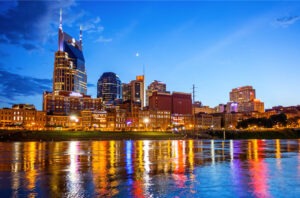Travel PR Isn’t Just for the Coast
Published on March 21, 2024, 1:54 p.m.
by Jackson Olmstead.
Travel and destination public relations are components of destination marketing that have existed for decades and are staples in most cities across the United States. With tourism as an industry possessing around 10% of the world’s GDP, it’s clear that destination PR is a practice that is here to stay.
Travel is something that can benefit almost everyone mentally and emotionally according to studies at Washington State University and The University of Alabama. Levels of happiness in people who travel frequently are much higher — even as much as 7% higher — than those that don’t, driving home the importance of destination PR.

Tourists or travelers
Destinations must cater to a wide array of audiences by highlighting all of the elements that make their cities or towns memorable. Jay Waters, senior instructor of advertising and public relations at The University of Alabama, said that there are typically two types of key audiences — tourists and travelers. “Tourists see travel as entertainment or as an expense,” explained Waters, “and travelers see travel as something essential, as an investment in themselves.”
Waters noted that almost everyone desires to be travelers, but in his experience, most are realistically tourists. This notion presents a challenge for travel PR, seeing that one key audience prefers a packaged and engaging experience, but the other key audience prefers the ability to explore as an enrichment activity.
Grabbing the attention of both audiences is hard to master, but some have found success in doing so — think Visit Tampa Bay with its CityPASS for water activities and indulging in the arts, or Visit Pella, Iowa’s highlight of its Dutch heritage and architecture. Both locations showcase what makes them unique and present a strong brand identity.
Small destinations, big personalities
When one thinks of travel and destinations, a scenic sandy beach or an all-inclusive resort may come to mind, but smaller cities are proving that they, too, have unique flair and charm to bring to potential visitors.
McClelland Schilling, marketing specialist at Experience Columbia SC, said destinations have to highlight everything that makes them an ideal destination for a wide range of visitors — and do it in a way that is authentic and reflective of their culture.
“There’s more sides to the travel industry than just leisure travel,” Schilling said. “There’s also meetings, conventions and sports.”
She also noted that many smaller destinations fared better than the larger ones following the economic downturn after the COVID-19 pandemic. Spotlighting Columbia’s affordability and inclusive environment sets the destination apart, positioning it as a “new, modern Southern city where everyone feels welcome,” according to Schilling.
Digital advertising and social media certainly help portray destinations in a favorable light, allowing for creative storytelling to capture the attention of viewers, and their hearts, too. “People are looking to social media to get travel ideas; they’re looking for those hidden gems,” Schilling explained, speaking about Experience Columbia SC’s user-generated social media content. Providing an outlet to those who are passionate about a destination to share their story in a way that drives engagement is a valuable item in a practitioner’s tool box.

Money talks, and so do influencers
Destination PR is a practice with an often stellar return on investment, gaining even triple the amount spent back in local sales, according to Jimmy Hart, vice president of marketing and communications at Visit Tuscaloosa. “It can be a very high impact method to bring new dollars into the local economy,” explained Hart, “and a smaller destination is going to benefit most by attracting the right kind of visitors and travelers.”
Social media plays a major role in allowing destinations to get creative with the content they distribute to potential visitors in a targeted way. Hart said social media has revolutionized the way destinations can form relationships with potential visitors because a mix of different audio and visual components can be used in tandem. Visitors can also produce content to show their followers a new location they found interesting or exciting.
Believe it or not, this practice isn’t something that is new — it actually predates the existence of social media. Waters said that travel influencers appear more prevalent now because their presence has been amplified due to social media. Hart added that a more visual and targeted experience online is effective for getting a destination’s message directly to the people who actually want to view it.
Branding is best practice
Waters emphasized that a robust brand identity is paramount in destination PR. He explained that if a destination highlights too many of its shops or activities, then “what the destination feels like goes away,” and the chance to make a meaningful connection with the audience is lost.

This practice is one of the hardest things to master, and Waters contends that brands that do it successfully, such as Nashville with its music focus or New Orleans for its party focus, often find success. “One of the hardest things for destinations to do is create a brand that has meaning that’s differentiating, and that is authentically representing what the brand is about,” remarked Waters. Schilling echoed this sentiment, saying that the brand should be “a true and authentic reflection of who [the] city is.”
All of the various elements combined — social media, creative branding and everything in between — work great for small inland destinations, just like on the coasts. Having a strong and comprehensive identity in destination PR is sure to bring more visitors to the area, hopefully turning some of those tourists into travelers in the process.




